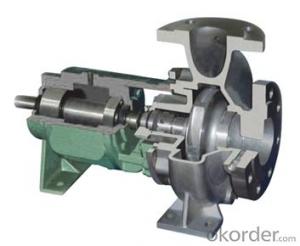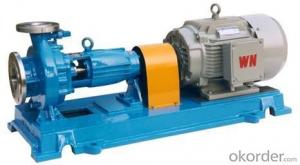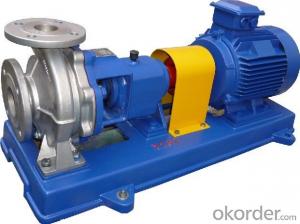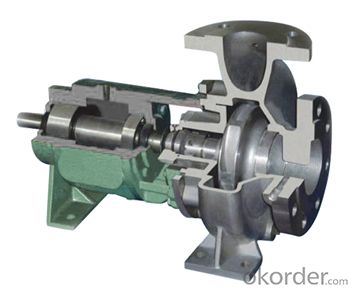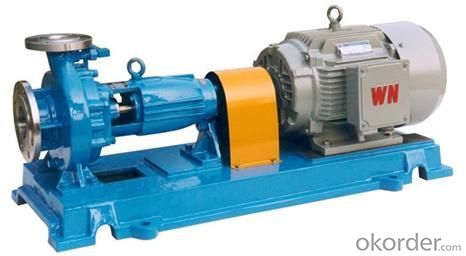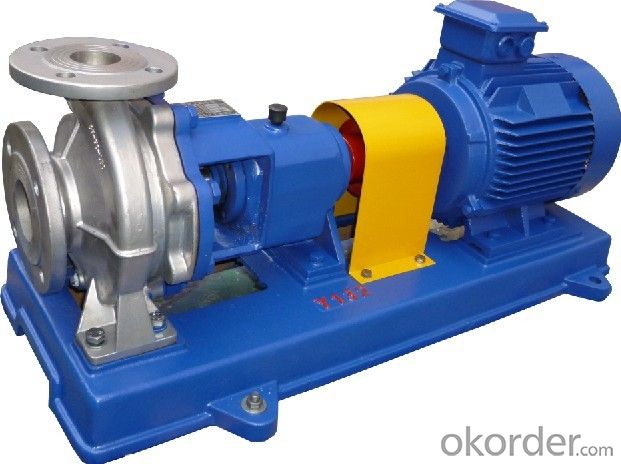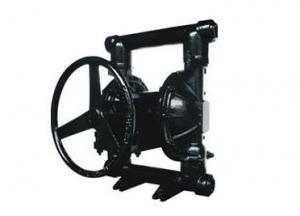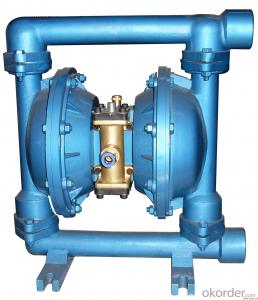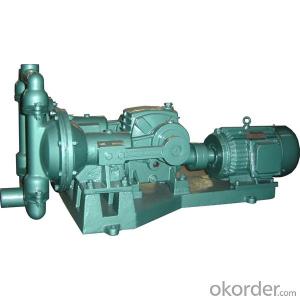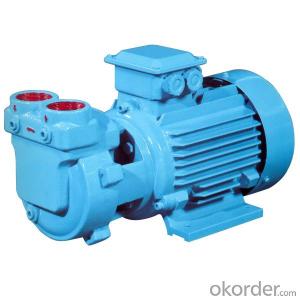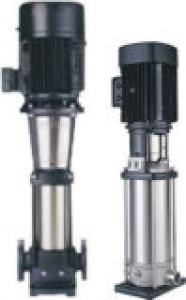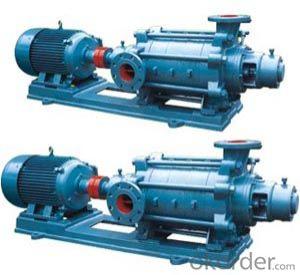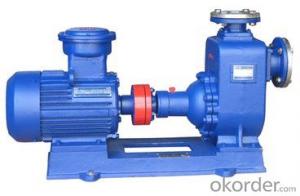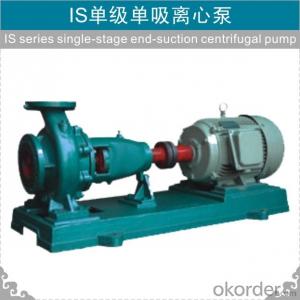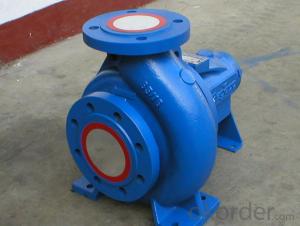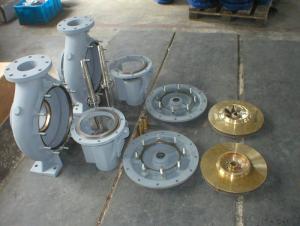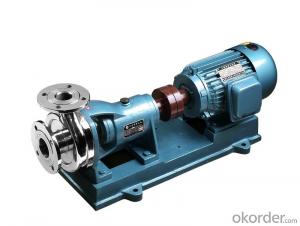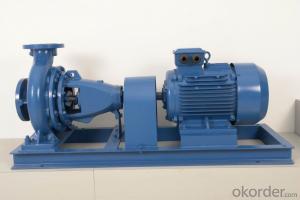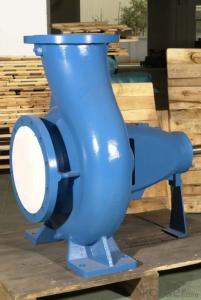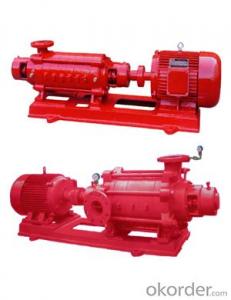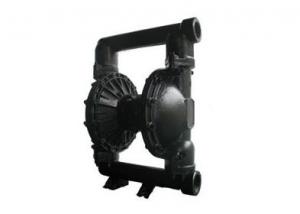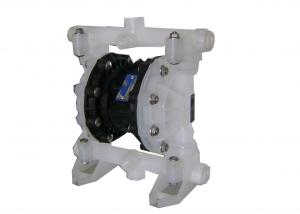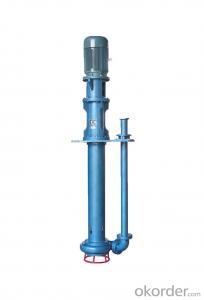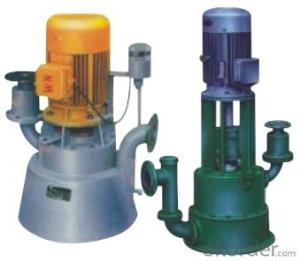IS Series End Suction Centrifugal Water Pump
- Loading Port:
- Shanghai
- Payment Terms:
- TT OR LC
- Min Order Qty:
- 1 unit
- Supply Capability:
- 500 unit/month
OKorder Service Pledge
OKorder Financial Service
You Might Also Like
IS Series Best Selling Centrifugal Pump
Product Description of IS Series Best Selling Centrifugal Pump
1, IS \ IR type single-stage single-suction centrifugal pump according to international standard ISO2858 specified performance and dimension design, mainly IS composed of pump body, pump cover, impeller, shaft, sealing ring, shaft sleeve and suspension bearing see, etc.
2, IS \ IR type single-stage single-suction centrifugal pump pump body and pump cover parts, from impeller back place subdivision, what say normally namely after the doors open structure. Its advantage is easy to check and maintain, repair without acting pump body, suction line, discharge line and motor, need to remove the extended coupling among connection parts, can exit rotor parts maintenance.
3, pump shell (i.e., pump body and pump cover) constitute a pump studio. Impeller, shaft and rolling bearing for pump rotor. Suspension bearing components supporting the pump rotor part, rolling bearing by pump radial force and axial force.
4, in order to balance the axial force of pump, most of the pump impeller, before and after are equipped with sealing ring, and in the impeller HouGaiBan the balance hole, because some pump axial force is not big, impeller back did not set sealing ring and balance hole.
5, pump axial sealing ring is by the packing gland, packing ring and packing, etc, in order to prevent the air intake or a large number of water leakage. Pump impeller if there is a balance, is equipped with soft packing cavity and impeller inlet are interlinked, such as impeller entrance liquid in the vacuum state, then easily along the shaft sleeve surface intake, so in the packing chamber are equipped with packing ring through the pump cover holes, will pump indoor pressure water lead to packing ring to seal. Pump impeller if not balance hole, because impeller back liquid pressure is greater than atmospheric pressure, therefore does not exist gas leakage problem, so don't pack packing ring.
6, to avoid axis wear, in shaft through the packing chamber with shaft sleeve parts of the protection. Bush and between shaft must have type O ring, in order to prevent along with surface intake or leakage.
7, pump drive way is through the extended elastic coupling and motor coupling, pump rotation direction, from driving end see, for clockwise.
FAQ
Q: Are your pumps acid-proofed?
A: To choose the right pumps for chemical applications, we do need further details on hydraulic operations as well as on the type, concentration and temperature of the liquid.
Q: Can your pumps mount Eff.1 motors
A: Currently, only on request though this will shortly be a CNBM standard.
Q: Are your pumps protected against dry running?
A: No, unprotected centrifugal pumps are not generally designed for dry running. It is important to give us or your dealer as much information as possible about the system in which the pump is used. Inlet pressure, the type of liquid to be pumped, together with relative density, viscosity and temperature, for example, are required in order to allow CNBM to recommend the right pump with the right gaskets for a long operating lifetime.
Q: How can I get trained on CNBM products?
A: Yes, we provide training courses in our factory (products, general and specific pump technology, hydraulics, and practical applications). Please consult your sales manager or get in touch with our headquarters for more information.
Q: Are your pumps cheaper than those of your competitors?
A: CNBM aims to give its customers the highest standards of quality and service and delivery times, all at a reasonable price.
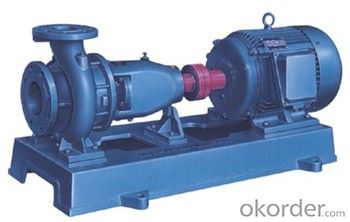
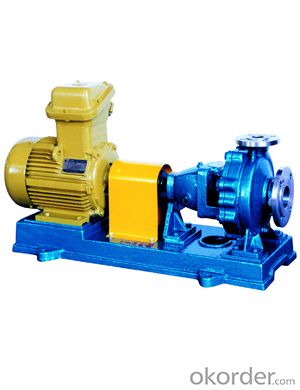
- Q: Can an air pump be used for inflatable amusement rides?
- Indeed, inflatable amusement rides can utilize an air pump for their inflation. In reality, this constitutes one of the most prevalent techniques employed to inflate these rides. An air pump, which is also referred to as a blower or air compressor, possesses a specific design that enables it to generate a substantial flow of air. This is crucial in rapidly inflating sizable inflatable structures like amusement rides. These pumps typically exhibit a considerable capacity for volume and are capable of providing a consistent flow of air to maintain the ride's inflation during operation. Furthermore, air pumps are frequently equipped with safety measures, including pressure regulators, to guarantee proper inflation of the inflatable amusement ride and prevent it from surpassing safe pressure levels.
- Q: How does an air pump handle different air densities?
- An air pump is designed to handle different air densities by utilizing a mechanism called compression. This mechanism involves compressing air molecules together, which increases the pressure and creates a higher density of air. When the air pump is turned on, it creates a vacuum or low-pressure zone inside the pump. This low-pressure zone allows air from the surrounding environment to be drawn into the pump. As the air enters the pump, it passes through a chamber where a piston or diaphragm compresses the air. The compression process reduces the volume of the air while simultaneously increasing its pressure. This compression is what enables the air pump to handle different air densities. Regardless of the initial density of the air being drawn into the pump, the compression mechanism ensures that the air is compressed to a higher density before being expelled from the pump. In simpler terms, the air pump essentially squeezes the air molecules closer together, which increases their density. This compression mechanism allows the air pump to handle air of varying densities, whether it is thin at high altitudes or denser at lower altitudes. It is worth noting that air pumps may have different designs and mechanisms depending on their purpose and application. However, the basic principle of compression remains the same, enabling the pump to handle different air densities effectively.
- Q: Can an air pump be used for cooling or ventilation purposes?
- No, an air pump cannot be used for cooling or ventilation purposes. An air pump is designed to generate air pressure for specific applications such as inflating objects like tires or air mattresses. To achieve cooling or ventilation, specialized devices such as air conditioners, fans, or ventilation systems are required.
- Q: Can an air pump be used for inflating hot air balloons?
- No, an air pump cannot be used for inflating hot air balloons. Hot air balloons require a specific method of inflation using a burner system. The burner heats the air inside the balloon envelope, causing it to expand and become lighter than the surrounding air. This creates the lifting force needed for the balloon to ascend. An air pump, on the other hand, simply pushes air into an object without providing any heat source. Therefore, it is not suitable for inflating hot air balloons.
- Q: Can an air pump be used for inflatable water slides for public parks?
- In public parks, inflatable water slides can indeed utilize an air pump. In fact, maintaining the appropriate air pressure in the slide is crucial, making an air pump indispensable. By relying on an air pump, park visitors can enjoy a secure and pleasurable experience. These pumps are specifically designed for inflatables, possessing the capability to deliver the necessary air volume and pressure required to fully inflate and support the structure of the slide. Furthermore, they often come equipped with various nozzle attachments that accommodate different valve sizes and types, guaranteeing compatibility with various water slides. Thus, it is not only possible but also recommended to use an air pump for the proper operation and upkeep of inflatable water slides in public parks.
- Q: How does an air pump handle different airflow capacities?
- An air pump can handle different airflow capacities by adjusting its speed and power output. It has a motor that can be controlled to increase or decrease the speed of the pump. This allows it to generate more or less air pressure and flow rate according to the desired capacity. Additionally, air pumps often come with adjustable valves or nozzles that can help regulate the airflow by restricting or increasing the size of the opening. These features enable the air pump to accommodate different airflow capacities and provide the required amount of air for a variety of applications.
- Q: Is it better to use air blower or air pump hot air gun for mobile phone?
- Blower type hot-air gun for repairing mobile phone. Compared to the popular hot air grab, the air pump hot air gun will be much simpler. Air pump type air gun has small nozzle and is suitable for single welding. Hot wire general use Ni Cr alloy, but also automatic air cooling function, and temperature control precision, suitable for novice operation. For some simple appliances, the air pump is enough for our needs.Hot air gun is mainly through the resistance heating, blow out hot air on the electronic components for welding, the temperature can be adjusted. Air pump hot air machine boot temperature is faster, more popular than the general, and the temperature will not rise in a straight line, but also with voltage, current and other indicator plate, the internal resistance components can also be replaced.Matters needing attention1, please do not use hot air gun with chemical (plastic) scraper.2. Remove the dry paint of the nozzle or scraper after use so as not to catch fire.3. Please use it in a well ventilated place, because the residue removed from the paint of the lead product is toxic.4 do not use hot air guns as hair dryers.5, do not direct the hot air to people or animals.6, when the hot air gun is used or just after use, do not touch the nozzle. The handle of the hot air gun must be kept dry, clean and far away from oil or gas.7, hot air gun to completely cool before storage.Hot air gun is one of the most widely used tools in mobile phone maintenance, and the process requirements are also high. Hot air guns are used to remove or install small components into large areas of integrated circuits. On different occasions, the hot air temperature and the air gun and other special requirements, the temperature is too low will cause the element weld, the temperature is too high will the worst element and circuit board. The air volume is too small, and the choice of hot air gun is also important. Do not choose low grade hot air gun because of the price problem.
- Q: Can an air pump be used for inflating air beds?
- Yes, an air pump can be used for inflating air beds. Air beds typically come with a valve that allows for easy inflation and deflation. An air pump, whether it is a manual hand pump or an electric pump, can be connected to this valve to quickly and efficiently inflate the air bed to the desired firmness. It is important to ensure that the air pump is compatible with the valve on the air bed to ensure a proper seal and prevent any air leakage.
- Q: Are there any specific safety features to look for in an air pump?
- Yes, there are several important safety features to consider when choosing an air pump. Firstly, an automatic shut-off feature is crucial to prevent over-inflation, as it will halt the pumping process once the desired pressure is reached. Additionally, a built-in pressure gauge allows you to monitor the inflation process and ensure you don't exceed the recommended pressure. A sturdy and durable construction, along with a non-slip base, is essential for stability and to prevent accidents during operation. Finally, some air pumps come with overheating protection to prevent damage to the motor and avoid the risk of fire or other hazards.
- Q: What is the maximum number of air pumps that can be connected in series?
- The maximum number of air pumps that can be connected in series depends on various factors such as the power supply, voltage ratings, and the capacity of each individual pump. To determine the maximum number of air pumps that can be connected in series, it is important to consider the total power consumption and the compatibility of the pumps. Firstly, check the power supply specifications. If the power supply can handle the combined power consumption of multiple pumps, it becomes feasible to connect them in series. Additionally, ensure that the voltage ratings match or are within an acceptable range for all the pumps, as connecting pumps with different voltage requirements can result in damage or malfunction. Furthermore, consider the capacity of each pump and the required airflow. Connecting too many pumps in series can lead to decreased airflow due to increased resistance. It is crucial to assess the desired airflow and match it with the combined capacity of the pumps. Ultimately, it is recommended to consult the manufacturer's guidelines or seek professional advice to determine the maximum number of air pumps that can be connected in series.
Send your message to us
IS Series End Suction Centrifugal Water Pump
- Loading Port:
- Shanghai
- Payment Terms:
- TT OR LC
- Min Order Qty:
- 1 unit
- Supply Capability:
- 500 unit/month
OKorder Service Pledge
OKorder Financial Service
Similar products
Hot products
Hot Searches
Related keywords
